Human-centric Workforce Trends for Startups
Jul 07, 2021

By Melissa Marts, Venture Associate, and Taylor McLemore, Managing Director of the Techstars Workforce Development Accelerator
There’s never been a better time to innovate in the upskilling and reskilling market. According to the 2021 Deloitte Human Capital Trends Report, 41% of executives believe that upskilling and reskilling will be one of the most critical ways they invest in transforming work in a post-pandemic world. We are seeing a few major market movements that, when combined, create unique opportunities to disrupt traditional workforce development models.
Market Movements
Before diving into opportunities, we’ll first unpack how we see market currents flowing in the upskilling and reskilling space. Our intent is not to provide a comprehensive view of the upskilling space; rather, it’s to explore macro market movements and their implications in order to identify emerging challenges we believe are ripe for innovation.
Movement 1: General functional skills ⇒ Specialized skills and soft skills
Companies have ramped up their efforts to automate repetitive work; Gartner estimates that 90% of large global enterprises will adopt robotic process automation in some form by 2022. As companies across industries think strategically about what work machines can do, they are also beginning to rethink the role people play. Machines are great for completing routine work in a single vertical; however, people are best at completing non-routine work that requires understanding and applying context across many domains. As a result, many companies have stopped focusing on hiring workers with general functional skills, since process-heavy functional work is an easy automation target. Instead, they have begun to seek out employees who have a strong contextual foundation for their work, specialized technical skills that cannot be easily automated, and strong soft skills that enable them to flexibly adapt to rapidly changing work demands. Companies and workers need solutions that teach specialized technical skills and that can measure soft skill development and proficiency.
Movement 2: Learn by watching ⇒ Learn by doing
The first digital revolution in learning was the rise of the massive online learning catalogue, managed in the employer world by learning management systems. Now, every company has more training videos than they know what to do with, yet workers are not learning at a faster rate. Rather, they are craving experiential learning, where they learn by doing something new rather than watching it. Companies are seeking to integrate learning in the flow of work so workers can learn the skills and knowledge they need just in time, and they need better ways to facilitate that integration. This could look like bringing learning content into an employee’s primary system of work or providing hands-on, project-based learning opportunities throughout the work day, to name two examples. The movement toward learning by doing also implies that education needs to become more specific, targeted, and quickly digestible to facilitate real-time learning.
Movement 3: One career ⇒ Fractional careers and portfolios of jobs
Long gone are the days of workers sticking with a single career. More and more, we’ve seen that the days of workers pursuing one career at a time may be behind us too. Instead, workers are stringing together a series of jobs to build their own career paths. For some, that takes the form of a primary position and a side hustle (43% of Americans report having a side hustle in addition to a full-time position). For others, it’s fully embracing the gig economy. According to Upwork and Freelancers Union, the percentage of full-time gig workers in the U.S. grew from 17% in 2014 to 28% in 2019. These workers need new ways of integrating working and learning as they navigate through uncharted territory and create totally new career pathways. For this growing segment of the workforce, the burden of professional development is shifting from the employer to the worker. They need solutions that help them weave together learning, projects, gigs, and jobs to help them best position themselves for new opportunities in a rapidly changing job market.
Movement 4: Skyrocketing education costs
Although perhaps the most talked about trend in the workforce development space, we’d be remiss if we did not at least briefly mention the rapid rise in post-secondary education costs in the United States. According to the National Center for Education Statistics, real tuition costs have risen 50% for 4-year universities and 38% for 2-year institutions since 2000 (adjusted for inflation). Additionally, many employers don’t feel that college graduates are career ready and must invest heavily in onboarding programs to get new graduates up to speed in the workforce. But what if educational institutions were required to publish the return on investment for their programs? If there was a solution to help companies and students quantify the value of education, market leaders would soon emerge who could prove the highest ROI — relying on results, rather than reputation. Companies need better ways of quantifying student experience, education, and potential to make better hiring decisions.
Emerging Opportunity Areas
What do all these market movements mean for workforce development founders and innovators? We believe they are indicative of two massive emerging markets: eduployment and the future of work.
The rise of eduployment
“Eduployment,” a term coined by Scott Belsky, CPO of Adobe, is the vertical integration of education and work. It is the convergence of three legacy markets — the labor market, the education market, and the corporate learning and development market — into a new massive market with ample innovation opportunities. Each market by itself is huge; in the U.S., the Higher Ed market is estimated to be $65B and the Learning and Development market is estimated to be $165B. Because these markets have traditionally been siloed, there are abundant opportunities for founders who are building solutions that bridge the gap between learning and work in scalable, sustainable ways.
This emerging opportunity area is driven by companies’ desire to teach workers exactly what they need to know to be successful in their jobs. Several models exist in this space, from traditional internships and company onboarding to apprenticeships, capability academies, and on-the-job learning; despite that, we believe there is substantial room to innovate in eduployment. We’re especially fascinated by new models of eduployment that lead to better career outcomes for low-income communities, solutions integrating gig work and learning, and tools that enable employers to build learning solutions in the flow of work.
The acceleration of the future of work
What is the future of work? According to MIT, it’s all the ways that emerging technologies (like AI, robotics, and quantum computing) are changing human work. It encompasses changes in where work will be done (like remote, hybrid, and asynchronous work), how work will be done (via new tools, with robots, augmented by AI), and what is required to get the work done (the skills, capabilities, knowledge, and experiences people need). This market has been emerging for the past 20 years but has now rapidly accelerated due in part to the pandemic, which according to McKinsey has propelled 67% of global executives to increase investments in AI and automation.
Companies know they need to invest in emerging tech. They also know they need to invest in their workforce to ensure the people they hire today will be able to do tomorrow’s jobs. However, most employers can’t yet answer the question, what does a high-impact investment in the workforce look like? The increasing rate of technological change makes it nearly impossible for companies to predict what skills and capabilities they need their workforce to have in five or 10 years time. We believe there are huge opportunities in this space to innovate by helping employers answer this question — by using some of the very technologies disrupting work to better develop and measure skills and capabilities, determine the true ROI of education, predict potential, and chart new career paths that increase economic opportunity and solve critical talent challenges.
About the Authors

Melissa Marts
Melissa Marts is a Venture Associate at the Techstars Workforce Development Accelerator. She has spent the last five years focused on workforce development, first as a consultant with Deloitte’s human capital practice and later as a research fellow at a think tank, where she conducted cutting edge research on the future of work. She’s passionate about finding innovative solutions to bridge the skills gap. Melissa graduated from Vanderbilt and is currently pursuing her MBA at Stanford.

Taylor McLemore
Taylor McLemore is Managing Director of the Techstars Workforce Development Accelerator. He is an entrepreneur, scale and growth executive, investor, venture advisor to family offices, and community builder. Taylor cofounded Codeable, a coding school, and founded Patriot Boot Camp — a nonprofit established in partnership with Techstars and Governor Jared Polis. He graduated from Davidson College and lives with his family in Denver, CO.

